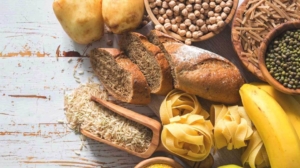
Carbohydrates are one of the three macronutrients (the nutrients we need in large quantities) in our diet, along with fat and protein. Carbs are the body’s most convenient energy source.
While all carbs follow the same track from our mouth to their final destination (cells throughout the body), the steps and length of time it takes them to get there depends on the structure of the molecules you’re starting with.
If you are eating sugar , which are made up of single sugar molecule. It is already pretty close to the body’s preferred form of glucose, so there’s not much work to be done. These small sugar molecules can be digested and absorbed into the bloodstream very quickly, which is why they’re the most rapid form of energy.
When you eat starch, the process of breaking it down into glucose happens over a longer period of time, because of its complex structure. This is why this type of carb provides a slower and steadier form of energy, and is less likely to cause blood sugar spikes.
As carbs are converted into glucose, they become ready to enter the bloodstream. First, the glucose molecules travel from the small intestine to the liver. The liver then dispatches most of that glucose throughout the body via the bloodstream.
Once it hits the bloodstream, some glucose will immediately get used by cells in need of energy, those in our brain or our muscles thanks to the vital hormone called insulin. Insulin allows the glucose in our bloodstream to enter the body’s cells so it can be used for energy. When we eat carbs, the pancreas automatically secretes the perfect amount of insulin to help the cells use glucose and keep our blood sugar levels nice and steady.
